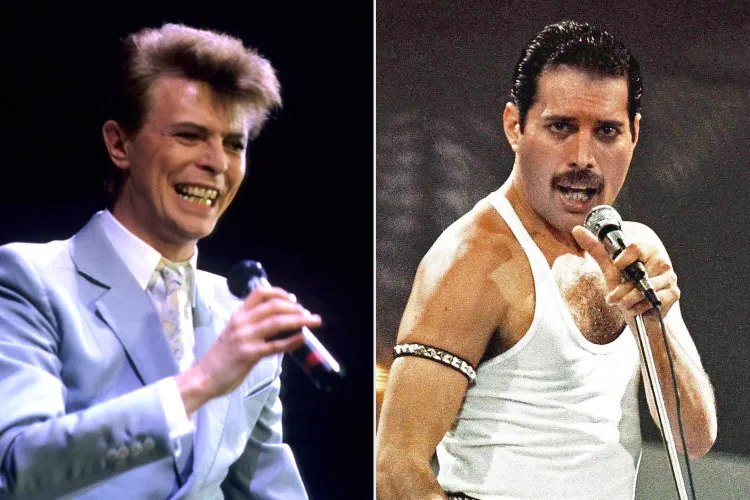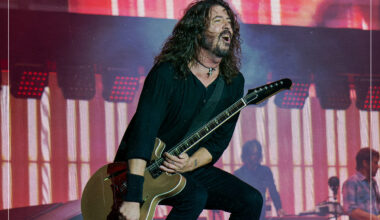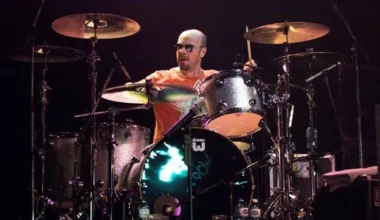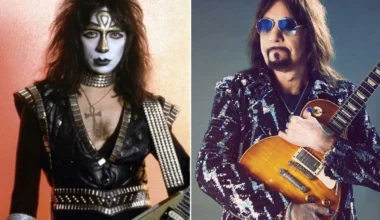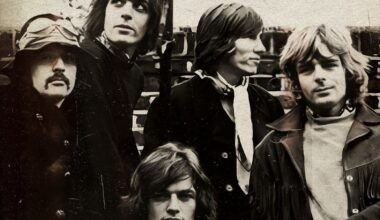Bob Geldof is clearing up what actually happened at Live Aid.
Geldof, 73, spoke to The New York Times for an article published July 13 in honor of the 40th anniversary of Live Aid. Geldof was inspired to organize the blockbuster concert, which was held simultaneously at Wembley Stadium in London and John F. Kennedy Stadium in Philadelphia, after he watched a 1984 BBC report about the famine in Ethiopia.
Geldof, lead singer of the Irish rock band the Boomtown Rats, was inspired to find ways to help. That December, he organized the Band Aid single “Do They Know It’s Christmas?” The next summer, he and Scottish singer Midge Ure organized the Live Aid concerts, with a lineup that included The Beach Boys, Patti LaBelle, Hall and Oates, Sade, Sting, Phil Collins, U2, The Who, Elton John, Paul McCartney, Joan Baez, Crosby, Stills and Nash, and many more.
:max_bytes(150000):strip_icc():focal(452x0:454x2):format(webp)/freddie-mercury-live-aid-071425-4a644093c5174690af71a3208de02bb7.jpg)
One of the performances that’s lived the longest in the popular imagination was the set by Queen, fronted by the late Freddie Mercury in a now-iconic white tank top and light-washed jeans. The 2018 Mercury biopic Bohemian Rhapsody dramatized their performance and showed donations skyrocketing after they performed.
But Geldof told The Times that the understanding of events in the movie, where donations only started flowing because of that performance, wasn’t actually true. “The movie isn’t right. Queen were completely, utterly brilliant. But the telephone lines collapsed after David Bowie performed,” he said. Bowie, who died in 2016 at 69, performed right after Queen.
Geldof explained that the CBC had made a report about Ethiopia, and there were outtakes that weren’t broadcast because the visual images were “just so appalling” and worse than what the BBC had shown. When Geldof went to talk to Bowie about his set for the show, he remembered, “Before we started talking about the songs, I said, ‘Look at this thing,’ and I put it on.”
:max_bytes(150000):strip_icc():focal(499x0:501x2):format(webp)/david-bowie-live-aid-071425-86cee78aed5f4b7791d0810627a5907f.jpg)
“David was crying and said he would cut a song from his set to show the CBC report instead. It’s an extraordinary moment during the concert, because at the end of ‘Heroes,’ which the crowd were all singing, he quietly introduces the clip and asks people to send their money in,” Geldof said. “It was like a slap in the face.”
“Bowie brought the house down. That was the key moment,” he said.
Of course, the work done that day by Mercury, who died in 1991 at 45, remains elemental. “They just nailed it,” Queen roadie Peter Hince told PEOPLE in 2019. “I think it was the right time. The audience had to sit through bands who maybe weren’t as exciting as Queen were. More laid back. And I thought they needed a kind of shot in the arm, you know? Queen came on and just ripped the place up.”
Never miss a story — sign up for PEOPLE’s free daily newsletter to stay up-to-date on the best of what PEOPLE has to offer, from celebrity news to compelling human interest stories.
The Live Aid concert was ultimately watched by 1.5 billion people in more than 150 countries and would go on to raise more than $140 million. “Do They Know It’s Christmas?” raised about $9 million and inspired Harry Belafonte to organize “We Are the World,” which became the fastest-selling single in history and raised more than $80 million.
